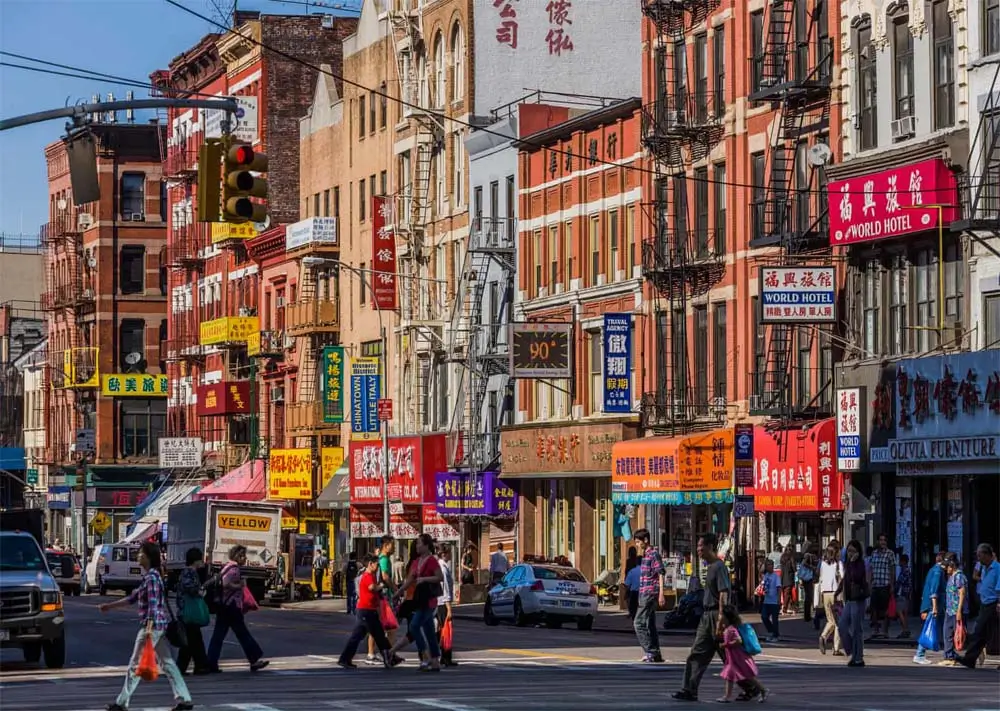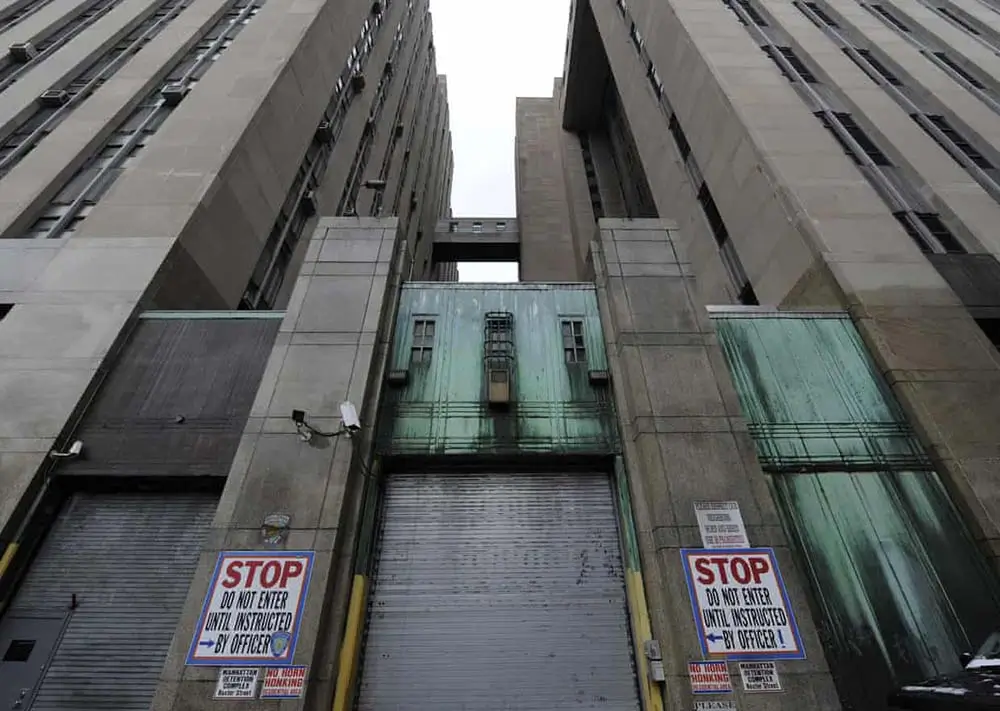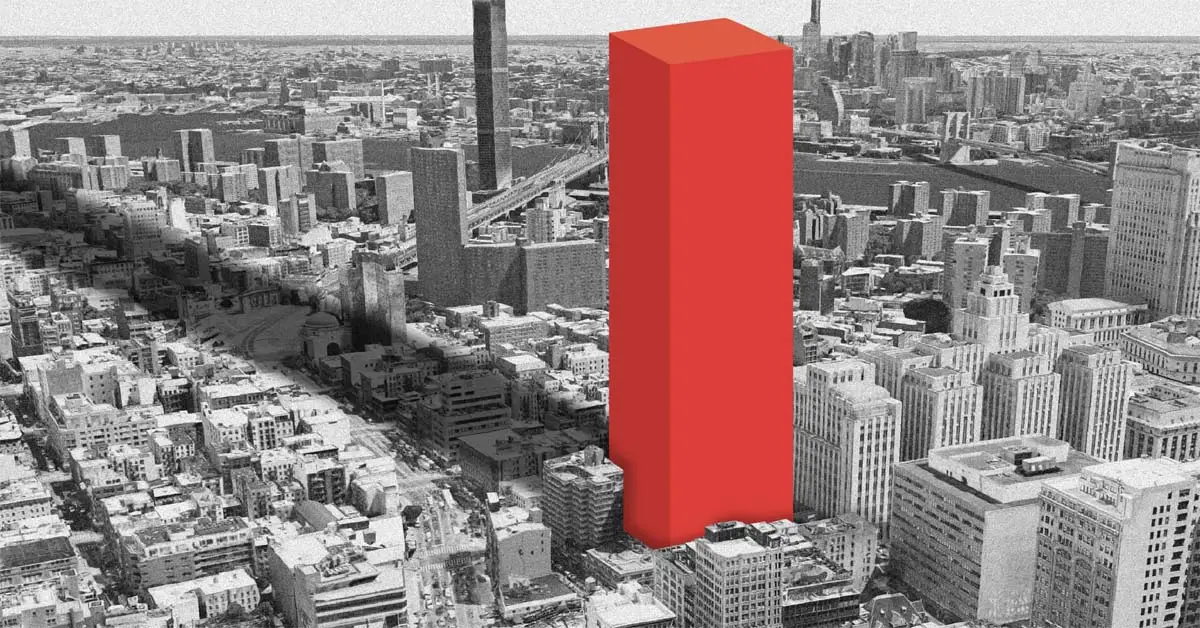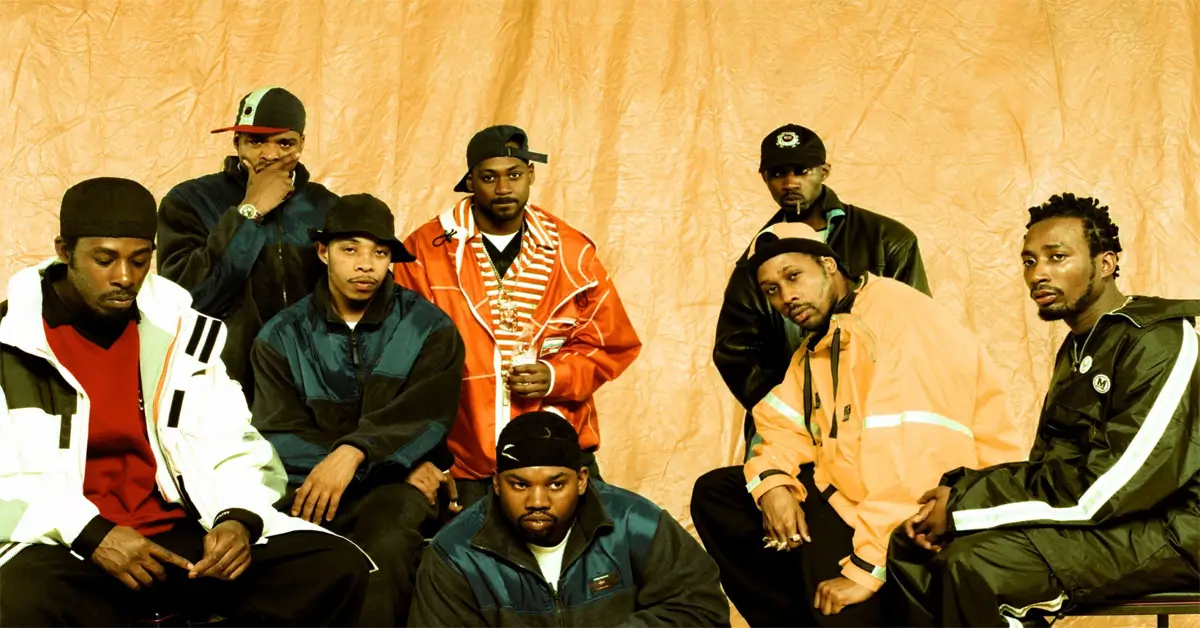NYC Is Closing Rikers Island, Building New Jail In Chinatown
Rikers Island, the notoriously grim jail that the city council voted to shut down in 2019, is being replaced by 2027 with four smaller jails throughout the city, including the one in Chinatown.
Urban planners assert that the facility will contribute to the rehabilitation of the criminal justice system. However, local residents view it as a harsh symbol of incarceration.
For almost two centuries, New York City’s Chinatown has hosted a quintessential American narrative: immigrant laborers and their families residing in close quarters within modest tenements. Among these workers is Dennis Chung, the proprietor of Pasteur Grill and Noodles, a Vietnamese pho restaurant he’s managed on the western fringes of the neighborhood for 27 years. Throughout this time, he’s endured various challenges, including 9/11, Hurricane Sandy, and the COVID-19 pandemic.
Now, another emblem of the American experience is taking form right across from Chung’s establishment: a massive new jail. Anticipated to reach around 300 feet in height, this new structure is set to become the tallest correctional facility globally. Chung expresses his concern that this development could be the final blow to his business, particularly with the added burden of the pandemic. In Cantonese, he conveys, “With the jail in the vicinity, it might spell the end.”
City authorities and advocates for justice reform argue that the new jail is an essential undertaking in the effort to close Rikers Island, the infamously grim penitentiary that the New York City Council voted to shut down in 2019. This decision mandated the replacement of the facility by 2027 with four smaller jails dispersed throughout the city, including the one in Chinatown. Planners contend that this new institution will be a more humane alternative, conveniently situated in proximity to downtown courthouses.

The upcoming tower is set to replace a significantly shorter jail that has occupied the site since the 1980s. However, its construction has faced substantial delays, in part due to prolonged opposition from a diverse coalition of individuals, ranging from prison abolitionists to local landlords, and even, at one point, Eric Adams, who had vowed to oppose the new jail while campaigning for mayor. Their collective argument revolves around the idea that the new jail could be an eyesore with the potential to harm some of New York’s most vulnerable immigrants, and that the billions of dollars allocated for its construction might be better spent elsewhere.
Eric Adams changed his stance on the matter after assuming office, and now construction crews have finally begun their work. This has disrupted the quiet lunchtime conversations at Pasteur Grill and Noodles, marked by the resounding crashes of demolition—a prelude to a process that may extend over the course of a decade. Dennis Chung reflects on this with resignation, saying, “So I’ll just need to put up with this, or retire early.”
The question of how New York City arrived at the decision to proceed with such a contentious correctional structure in the heart of its downtown area is complex. It raises the question of whether the project is indeed, as opponents claim, an unsightly emblem of mass incarceration, or if it aligns with the perspective of planners who see it as a step toward rectifying the city’s criminal justice issues, albeit at a gradual pace. The debate also prompts us to consider whether there might be a more suitable alternative approach.
The story commences at Rikers Island, a sprawling 413-acre expanse in the East River, within close proximity to LaGuardia airport’s runways. It stands as the location of one of the most nightmarish correctional facilities in the United States. Astonishingly, despite the fact that 85% of Rikers inmates have not been convicted and are merely awaiting trial, the average detainee spends nearly four months in the facility, which is four times the national average. Even more distressing is that a significant number of individuals find themselves trapped there for years or, tragically, have met their demise within its walls.
In 2023, the death toll at Rikers Island has reached seven inmates, bringing the total number of fatalities since Eric Adams assumed office to 26. Federal prosecutors have termed this a “collective failure with deep roots.” Investigations have uncovered dilapidated buildings, unsanitary living conditions, systemic abuse of inmates by Rikers guards, and a federal judge has issued a warning about placing the jail under federal control if the city cannot bring an end to the ongoing chaos.

The closure of Rikers Island is widely accepted, even in Chinatown, with little debate regarding the necessity of shutting it down. The central controversy has always revolved around what should happen next.
One of the champions of the “borough-based jails” plan, which involves constructing four new facilities in Brooklyn, Queens, the Bronx, and Manhattan, is Dana Kaplan. She is a prison reform advocate who, in 2018, assumed the role of deputy director in then-Mayor Bill de Blasio’s Office of Criminal Justice, where she played a key role in shaping the proposal. Presently, she serves as a senior adviser on the city’s Independent Commission for Criminal Justice Reform. Kaplan sees this as a rare opportunity to fundamentally transform the city’s criminal justice system into a more humane institution.
According to Kaplan, the objective is not merely to relocate detainees but to redesign the system in a way that reduces the time they spend waiting behind bars. She points out, “It serves no one for individuals to sit on Rikers Island for literally years pre-trial.” A significant aspect of this transformation involves moving the jails closer to the courts, such as the criminal courthouse adjacent to Chinatown, as opposed to the current practice on Rikers Island, which entails waking individuals up at 3 a.m., loading them onto buses, dealing with traffic, and often missing court hearings.
In Chinatown, the new jail tower is slated to replace a brutalist-style, 15-floor, 900-bed detention center known as “the Tombs,” which is notorious for its harsh conditions. The renovated facility is expected to have a similar bed capacity but with new amenities aimed at improving the quality of life, including recreation centers, health clinics, and visitation areas with children’s playrooms. These enhancements are the result of input from residents, family members, and staff, gathered during extensive focus group sessions lasting “hundreds of hours,” as explained by Kaplan. She asserts that this redesign will result in a fundamentally different experience for both incarcerated individuals and staff.
Kaplan also clarifies that the need for a taller structure is due to the impossibility of incorporating these essential elements within the square footage provided by the existing Department of Corrections facilities.

New York City had explored an idea from the non-profit design group Van Alen, which proposed the replacement of Rikers with a network of “justice hubs.” These hubs would introduce new detainee facilities in street-level buildings shared with neighborhood residents, with the goal of reducing the “fear and stigma surrounding jails.” However, the city ultimately turned down this concept. Dana Kaplan explains that the idea was considered logistically challenging and possibly not in line with the neighborhood’s preferences. She emphasizes the value of having these services located on-site.
Nonetheless, the residents of Chinatown remain unconvinced. A significant source of their concern is the fact that, as of now, no one, including city officials, Kaplan, or Eric Adams, knows what the new jail will actually look like. This uncertainty arises because the jail is being constructed through a “design-build” process, wherein the city will commission a single firm to both design and build the facility. While the demolition of the old jail is underway, the city has yet to select a developer for the new one.
Jan Lee, a local landlord and the founder of Neighbors United Below Canal Street, a group opposing the new jail, envisions a “massive building, extending two to three blocks in every direction, that rises as tall as the Statue of Liberty,” based on the approved zoning permit for the new jail. He suggests that this new structure will dominate the Chinatown skyline and become an unmistakable feature of the area, to the extent that Chinatown could be dubbed “Jail Town” when combined with the presence of the city’s criminal court and another federal prison a few blocks away.
Kerri Culhane, an architectural historian knowledgeable about Chinatown’s buildings, foresees that the new jail will be significantly out of scale, potentially casting a shadow over the Manhattan Bridge and emerging as the defining architectural element of the neighborhood.
Chinatown’s residents are not solely concerned about the visual aspects. They fear that the extended construction of the jail could have dire consequences for a neighborhood already grappling with difficulties. Chinatown bore the brunt of the pandemic earlier and more severely than its wealthier Manhattan counterparts. This, coupled with a surge in anti-Asian violence, has accelerated the departure of Asian residents, an exodus that had been ongoing since 9/11. The neighborhood was severely affected by the attacks on the nearby Twin Towers, which shut down Chinatown for months, especially impacting its garment industry. Further departures occurred after Hurricane Sandy left Chinatown without power for weeks. In the aftermath of each disaster, residents assert that authorities provided inadequate assistance.

The surviving businesses in the area are witnessing a significant drop in visitors compared to before. Dennis Chung of Pasteur’s restaurant notes that by 6 or 7 pm, there are almost no customers, and with the construction of the jail intensifying, he fears for the survival of his business.
This concern isn’t just figurative. Many of the buildings facing the jail, including Chung’s storefront, are century-old tenements constructed with brick, mortar, and wood. Jan Lee explains that these structures were built inexpensively, lack steel reinforcement, and have shallow foundations. Beneath the jail site lies a former pond and a toxic waste dump that would need to be drained before constructing the new tower. Lee believes that this dewatering process could compromise the foundations of these tenement buildings, potentially leading to the evacuation of hundreds of families.
There is also significant worry about the senior center located directly adjacent to the jail site, housing many individuals over 90 years of age. Since the demolition commenced, the residents have been experiencing respiratory issues, tearing eyes, and severe noise disturbances, despite the new building not yet being constructed.
Last April, Jan Lee and Victoria Lee, a local Democratic party district leader (no relation to Jan Lee), were among the ten Chinatown residents arrested for attempting to block the first construction vehicles by sitting in the street and linking arms. Victoria Lee expresses that this protest was a desperate response to a city that has been “literally bulldozing their way through the community.” She maintains that the Adams administration disregarded their pleas, along with those of other local representatives, to consider “adaptive reuse” as an alternative—renovating the existing jail rather than constructing an entirely new one. She argues that this approach would be quicker, more cost-effective, and just as efficient.
The city, however, remains resolute in its determination to proceed with the new tower. A spokesperson for Eric Adams conveyed that the administration has engaged deeply with the community and elected officials, even pausing construction work for evaluation. Based on a thorough analysis by a team of experts and engineers, the administration has concluded that their plan is faster, more cost-efficient, and minimizes disruption to the community.

Christopher Marte, a progressive city councilman representing the local area, sees the delays in jail construction as an opportunity. He believes that as the city progresses toward breaking ground on Chinatown’s new jail, which is estimated to cost over $2 billion, there may come a point when they can’t secure the necessary funding. In such a scenario, Marte hopes that the city will consider the alternative they’ve been advocating for, which is the adaptive reuse of the existing space. He asserts that this situation is not a foregone conclusion.
Some activists propose an even more promising alternative: allocating the money to communities to prevent people from ending up in jail in the first place. They question why individuals need to be incarcerated to access services that should be readily available in their communities, especially when it comes to mental health care. By making such services accessible in communities, more prisoners could potentially be released.
For some, the decision to place services within jails indicates that the city has effectively given up on its residents. Jan Lee remarks that this sends a message that resources are being provided to help individuals, but they are being placed where it is known that they will eventually end up, which is jail.
At a recent town hall meeting in Chinatown with Mayor Adams, only Jan Lee, among the residents present, questioned the mayor about the jail. He didn’t demand the construction be halted but simply asked for a role in ensuring that the jail is appropriately sized and scaled with minimal community impact. Adams agreed and reminded the audience that the jail was not his original idea, expressing that he would have approached it differently. He also issued a somber warning, suggesting that without the new jail, there might be a need to release individuals convicted of violent crimes due to the lack of space, which he found problematic.
Nobody in the room challenged his statement. The opposition appeared weary, and the construction of the world’s tallest jail moved a step closer to reality.
In the face of such challenges, some like Dennis Chung, the noodle shop owner, are left with a sense of resignation. Chung hopes for faster construction so that things can return to normal, as he’s observed that opposing and protesting the jail hasn’t yielded the desired outcomes.
[National Criminal Justice Association]




